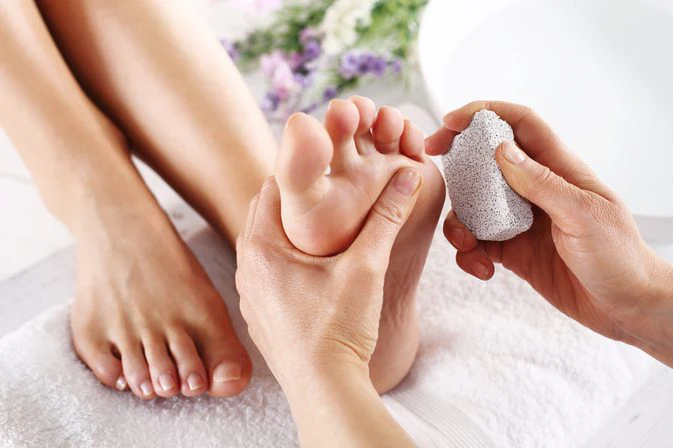Liverpool Bunion Treatment Specialists – Book Your Consultation

Bunions, medically known as hallux valgus, are bony bumps that form on the joint at the base of the big toe. They develop when the big toe pushes against the next toe, causing the joint to stick out and become enlarged. Bunions can be painful and make it difficult to wear shoes comfortably. They often develop gradually over time and can be exacerbated by factors such as genetics, wearing ill-fitting shoes, or certain foot conditions.
What Are Bunions?
Causes Of Bunions
The exact cause of bunions is not always clear, but several factors can contribute to their development. One common cause is wearing shoes that are too tight or narrow, which can squeeze the toes together and put pressure on the joint. Genetics also play a role, as bunions tend to run in families. Certain foot deformities, such as flat feet or low arches, can increase the risk of developing bunions. Additionally, injuries to the foot or arthritis can contribute to their formation.
Symptoms Of Bunions
Bunions can cause a range of symptoms, including pain, swelling, redness, and tenderness around the affected joint. The big toe may also become stiff or difficult to move, and corns or calluses may develop where the bunion rubs against the inside of the shoe. In some cases, bunions can lead to complications such as bursitis or hammertoe if left untreated.
Seeking Treatment In Liverpool
Importance Of Consulting A Healthcare Professional
If you suspect you have a bunion, it’s essential to seek treatment from a qualified healthcare professional in Liverpool. While bunions may seem like a minor inconvenience, they can worsen over time and cause significant pain and discomfort if left untreated. A healthcare provider can properly diagnose the bunion and recommend appropriate treatment options based on your individual needs and preferences.
Overview Of Available Treatment Options In Liverpool
Liverpool offers a variety of treatment options for bunions, ranging from non-surgical interventions to surgical procedures. The right treatment approach will depend on factors such as the severity of the bunion, your overall health, and your lifestyle preferences. It’s important to discuss your options with a healthcare provider to determine the best course of action for you.
Non-Surgical Treatment Options
Lifestyle Changes And Self-Care Tips
In many cases, making simple lifestyle changes and practicing self-care can help alleviate bunion symptoms and prevent them from worsening. This may include wearing comfortable shoes with a wide toe box, avoiding high heels or shoes with pointed toes, and using cushioning pads or orthotic inserts to relieve pressure on the bunion.
Orthotic Devices And Shoe Modifications
Orthotic devices, such as splints or braces, can help realign the toe joint and provide support and stability to the foot. Additionally, shoe modifications, such as wearing custom-made orthotic inserts or padding, can help redistribute pressure away from the bunion and alleviate pain and discomfort.
Medications And Pain Management Techniques
Over-the-counter pain relievers, such as ibuprofen or acetaminophen, can help reduce pain and inflammation associated with bunions. In some cases, corticosteroid injections may be recommended to provide temporary relief from severe pain and swelling. Physical therapy exercises can also help strengthen the muscles around the bunion and improve flexibility and range of motion.
Surgical Treatment Options
Overview Of Surgical Procedures For Bunions
If non-surgical treatments fail to provide adequate relief, surgical intervention may be recommended to correct the bunion deformity. There are several surgical procedures available in Liverpool, ranging from minimally invasive techniques to traditional open surgery. The specific procedure recommended will depend on factors such as the severity of the bunion, the presence of any underlying foot conditions, and your overall health.
Recovery Process And Expected Outcomes
Recovery from bunion surgery can vary depending on the type of procedure performed and individual factors such as age and overall health. In general, most patients can expect to experience some pain and swelling immediately following surgery, which can be managed with pain medication and rest. Full recovery may take several weeks to months, during which time physical therapy exercises may be recommended to help restore strength and mobility to the foot.
Risks And Considerations Associated With Surgery
As with any surgical procedure, there are risks and potential complications associated with bunion surgery. These may include infection, nerve damage, stiffness, or recurrence of the bunion. It’s essential to discuss these risks with your healthcare provider and weigh them against the potential benefits of surgery before making a decision.
Choosing The Right Treatment Plan
Factors To Consider When Selecting A Treatment Approach
When choosing a Bunion treatment Liverpool, it’s important to consider factors such as the severity of your symptoms, your overall health and lifestyle, and your preferences for treatment. Some people may prefer to start with conservative, non-surgical treatments and only consider surgery as a last resort, while others may opt for surgical intervention sooner to address the bunion deformity more definitively.
Importance Of Discussing Options With A Healthcare Provider
Your healthcare provider can help guide you through the decision-making process by providing information about the available treatment options, discussing the pros and cons of each approach, and addressing any questions or concerns you may have. They can also help tailor a treatment plan to meet your individual needs and goals, taking into account factors such as your age, activity level, and overall health.
Patient Testimonials And Success Stories From Liverpool
Reading about other patients’ experiences with bunion treatment can provide valuable insight and reassurance as you navigate your own treatment journey. Many healthcare providers in Liverpool may have patient testimonials or success stories available on their websites or in their offices, which can help you feel more confident in your decision to seek treatment and hopeful about the potential outcomes.
Conclusion:
In this comprehensive guide to bunion treatment in Liverpool, we’ve covered everything from the definition and causes of bunions to the available treatment options, both surgical and non-surgical. We’ve emphasized the importance of seeking timely treatment and consulting with a qualified healthcare provider to determine the best course of action for your individual needs.Bunions may seem like a minor inconvenience at first, but they can worsen over time and cause significant pain and discomfort if left untreated. By seeking treatment early and exploring your options with a healthcare professional in Liverpool, you can take proactive steps to address the bunion deformity and improve your quality of life.If you’re considering treatment for bunions in Liverpool, there are many resources available to help you learn more about your options and connect with healthcare providers in your area. Websites such as the NHS Choices website or the websites of local ho








